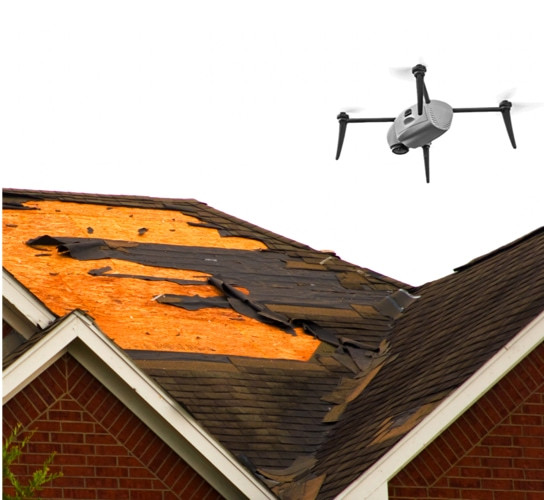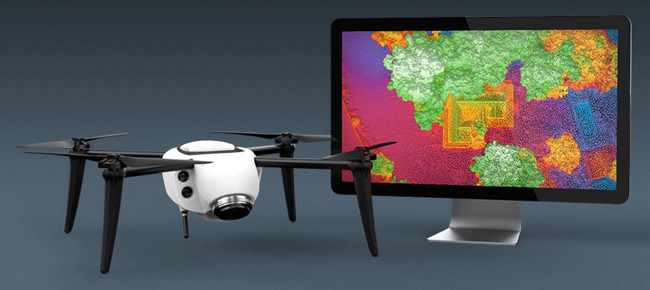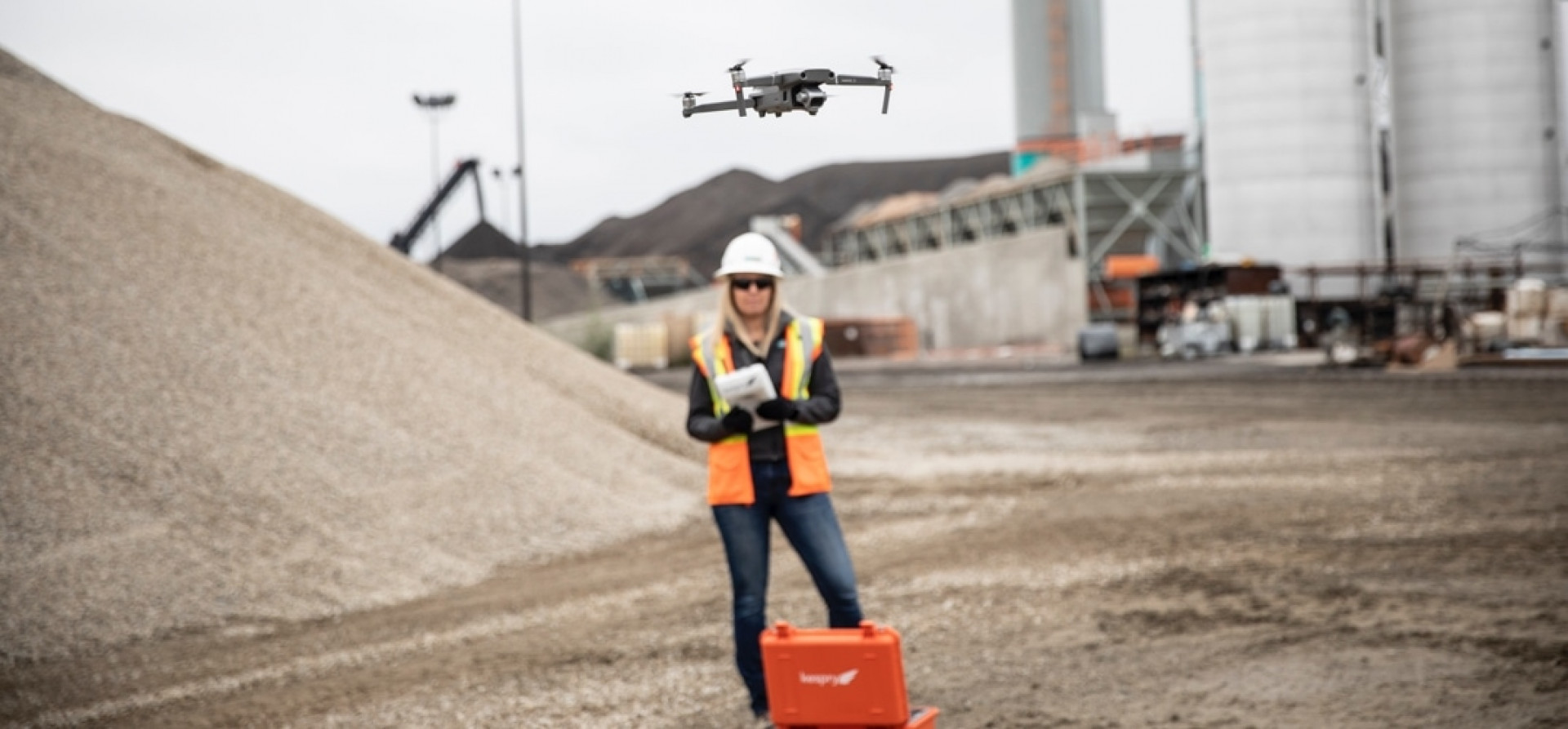AC: What’s interesting to me is, all these use cases, while there is some commonality in terms of the digitization aspect and creation of the digital twin, and the need to deploy analytics to drive insights and outcomes, these are also very different use cases.
An undersea robotic rover versus roof inspection, very different environments, very different buying centers, very different use cases. As a startup, how are able to scale up and service these different types of use cases? What's the common base of AI technology, or machine learning technology, or the computing platform that you guys do that's allowing you to scale up in these many different industry verticals?
GM: So what we're realizing right now is there's a whole new class of perception-based applications that are emerging because you have to get strong at really understanding image and video analysis. And this is where Kespry has been focused because of our heritage in building drone-based solutions for the last six years.
We've collected over a petabyte of information that's regarding the video, the image of physical assets, and those physical assets and how they are changing over time, specifically with a lens towards geospatial coordination, so where it's placed in physical space and how it changes over time.
And so, in all of those use cases, as right as is the want, the commonality is they're very strong physical assets that you're capturing high-resolution imagery, or high-resolution video, and being able to generate 2D and 3D models from it. And then, to your question on artificial intelligence, machine learning, there is a very common set of algorithmic methods that are being applied.
When you look at the world of artificial intelligence, machine learning specifically for this type of video analysis, it's very clear that the deep learning models where you can actually train data sets of image/ video data to pick out anomalies like hail on a rooftop, or corrosion on a pipeline are being used at scale now to be able to, as I mentioned earlier, understand the physical condition of that asset and how it changes over time.
And so this is where we think that there's an enormous opportunity that's still underserved in the market. Take perception-based data around video and images of physical assets. Be able to apply machine learning in a way that enables you to understand how that asset condition changes, and really being able to produce a strong digital view of the asset performance over a period of time, which is really the holy grail for most industrial companies. To understand how well their assets are performing as they're doing these industrial processes at scale.
AC: You also bring a pretty interesting point: while a lot of people are using standard AI models, you need real data to be able to train those models. And given the history of Kespry, by the time you started to more actively use AI and machine learning in delivering those solutions you were already a full-fledged business servicing these same customers, had access to all the data, and had a leg up versus competition in getting started on your own AI machine learning journey to deliver better outcomes for customers.
GM: Our journey because it started by generating the sensors, the payload, the hardware necessary to collect this data, and it was only about three and a half years. It was after I joined Kespry that we started to drive a lot of the insights, the machine learning, the artificial intelligence-driven insights from it. By that time, we had completed over 35,000 missions where we're collecting data over industrial work sites.
Today, we've just crossed over 100,000 sites that we can now collect data for these industrial sectors. That is unprecedented. And that's why we can actually now apply the AI/ML techniques that we're talking about, because you have to have great high-resolution data to be able to do that work and Kespry is pretty much on the forefront of that workload.
AC: You had to go through your own journey of creating that relevance, that touchpoint with customers, and then transition as the market was transitioning, hand-hold the market and the customers through their own transition journey.
GM: I think you and I have actually talked about this in the past, and laughed a little bit about it. It takes several years to collect the right data before you can actually position yourself properly as an artificial intelligence, machine learning-driven company. Without that data, I don't know how you can actually deliver any value from an ML, AI workload standpoint.
AC: Makes a lot of sense. So you've recently expanded your leadership team. Can you speak to the experiences that are shaping the culture at Kespry with infusion of new talent coming in, preparing the company, putting it on the roadmap where you and the rest of the board want to take it towards? How is the team dynamics evolving? And what's the set of talent that you're starting to bring into the team that's different from before?
GM: Kespry's crossed the magical $10 million ARR mark, which is a pretty interesting one for companies like ourselves. So we're no longer a small startup but we're not quite yet fully-scaled out as a business concern in this space. And so, there is a lot that we have to work through specifically when it comes to building the right team culture at that next point of growth.
So you kind of see these sort of moments of growth where initially, companies go into that sort of rocketship growth, the 0 to 10 phase, and we certainly saw some of that at Kespry. And then, when you start to get to the 10 million-plus you have to start to think about what that plateau looks like to build the next ascent, to be able to grow the next, call it, 15 million, 20 million in revenue.
And so, there is always this natural point in the enterprise software space. And I've seen this over and over again in companies that I've served with, where in that mid-teens moment you have to start to think about what is the right level of focus in terms of your go-to-market, your product-market fit, in terms of what you're delivering to your customers, but also the team that drives that.
So, in that regard, we had some additional members join Kespry and we're really excited about it. It's been a pretty public information. First and foremost, Kirk Marple joined as our CTO, and he came in more recently to Kespry, about six months ago. And he joined with experience in two big areas that we care about.
One is being able to do large scale cloud transformation across the multi-cloud infrastructure. That was some of Kirk's key background. And the other is being able to look at media asset management at Cloud scale. And so Kirk was one of the original developers that led windowsmedia.com at Microsoft.
Subsequently, he did a bunch of work for GM on autonomous vehicles, worked at STATS on sports analytics, no surprise on video image analysis. And so Kirk brought that level of focus and attention on where the future of Kespry is headed, particularly when it comes to perception-based analysis. And we're really delighted to have a leader like him join as our CTO.
In addition, Langley Eide has joined as our CFO and Chief Operating Officer. Langley brings an amazing amount of leadership and solid understanding how to scale SaaS businesses. We had an opportunity to do that once before as we were at Alteryx together. I was the President and Chief Operating Officer of Alteryx, and she was the Head of Strategy and Finance.
And that was an enormously productive opportunity to define the entire self-service market together. Langley saw this opportunity to look at how perception-based analysis would change the entire industrial world. And she more recently joined us to help us do that next stage of the climb of the journey that we're on.
So, it is something that's important in every company's lifecycle to continue to think about what is that right level of leadership to continue to serve the company at the stage of growth that it's at. We're at that stage of growth. We're going from our teenage years to full-fledged adult years as the company grows, and we're starting to bring in some of the people to help us get us there.



